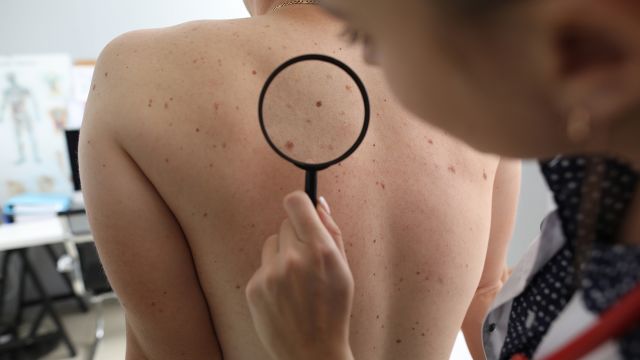As if dealing with diarrhea, stomach pain and fatigue wasn’t hard enough, there’s another major concern for people with ulcerative colitis (UC), a type of inflammatory bowel disease (IBD). A large analysis found that IBD is associated with an increased risk of melanoma, the most dangerous type of skin cancer.
Researchers from the Mayo Clinic analyzed 12 studies including nearly 173,000 patients with IBD. They found that IBD increased a person’s risk of melanoma by 37%. That risk was 50% higher among patients with Crohn’s disease and 23% higher among patients with ulcerative colitis. The results were published in Clinical Gastroenterology and Hepatology.
Other research has shown a link between IBD and skin cancer, too. Two earlier studies published in Gastroenterology found an association between IBD and non-melanoma skin cancers, such as basal cell carcinoma and squamous cell carcinoma.
While doctors can’t fully explain the connection between IBD and the skin, they think it involves the immune system. The risk of nonmelanoma skin cancers was particularly high among people treated with immune-suppressing medications such as thiopurines (azathioprine and mercaptopurine), for example. And the Mayo researchers say the problems with immune function that cause IBD may also allow melanomas to grow and develop.
Protect Yourself
The experts advise people with IBD to see a doctor regularly to get checked for skin cancer. And being extra-careful about sun safety is a must. Here are some tips you can follow to help keep your skin cancer-free if you’ve been diagnosed with IBD:
- Slather up. Rain or shine, apply sunscreen of at least SPF 30 about 15 to 30 minutes before sun exposure every day, both in the morning and again throughout the day.
- Limit your sun time. Avoid being in the sun between 10am and 4pm, when the sun’s rays are the strongest.
- Dress properly. UV radiation can go through light clothing, so wear long sleeves and long pants of tightly woven fabrics, hats and sunglasses that absorb UV rays.
- Look for the ABCDs. Keep an eye out for precancerous growths by looking at changing spots or moles. You want to check for asymmetry, border irregularity, color and diameter.

